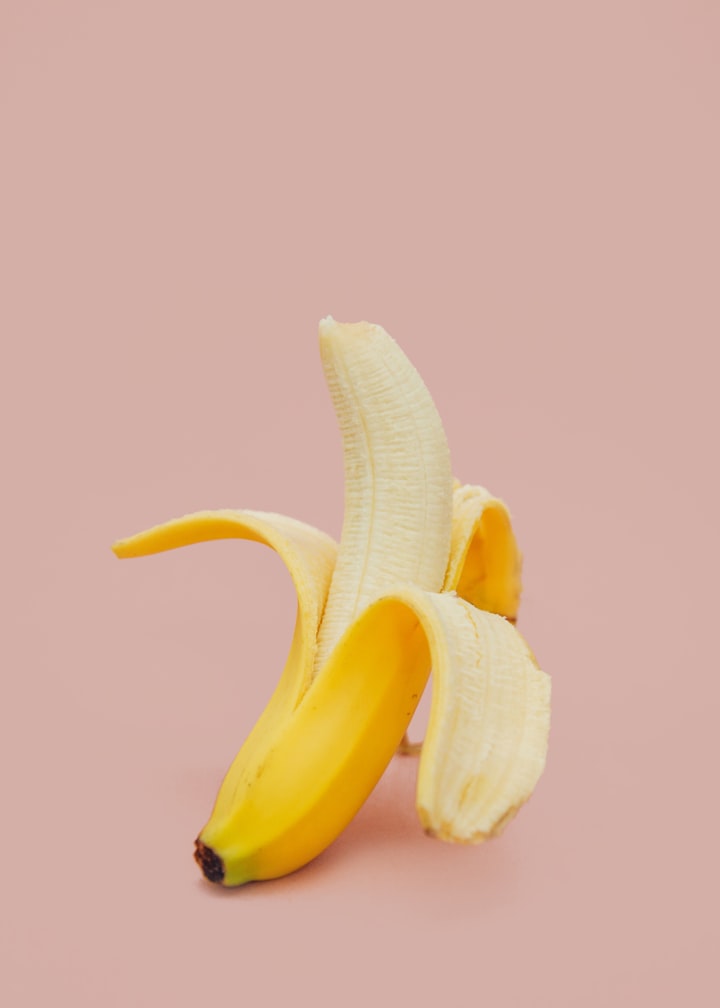What’s the Scientific Name for Bananas?
In the 1st century CE, bananas made their way to Europe via spice traders from India and then over the next 700 years gradually spread throughout the world.

Bananas are a staple in healthy diets around the world because they're incredibly nutritious and delicious. But while most of us know what a banana looks like, few people can explain exactly why they're so good for you.
In this article, we'll uncover the scientific name for bananas and explore the various benefits that eating these fruits can bring to your health. Along with offering up some tasty banana-themed recipes to boot! So if you've ever wondered what the real story is behind this beloved yellow fruit – read on to find out more.
The History of Bananas
Bananas are a popular and enjoyable fruit that have been around for thousands of years. It is believed that the banana dates back to 500 BCE in Southeast Asia, when it was cultivated for medicinal reasons.
In the 1st century CE, bananas made their way to Europe via spice traders from India and then over the next 700 years gradually spread throughout the world.
Today, there are over 1000 varieties of bananas grown worldwide, making it one of the most important food crops cultivated globally.
What is the scientific name for bananas?
Bananas are a beloved snack around the world and have many uses including baking, smoothies, and eating on their own. Did you know that bananas have a scientific name? The scientific name for bananas is Musa acuminate and it is part of the Musaceae family.
This family also contains other members such as plantains and lulo-the latter being commonly found in Central America. Although they share the same scientific name, different types of banana can have different flavors, shapes, and textures-some having more fat than others! Now that you know the scientific name for bananas, try tasting local varieties from around the world to see which ones you like best!
The benefits of eating bananas

1. Bananas are a good source of dietary potassium
Potassium is an important electrolyte that helps to regulate blood pressure and heart rate. It is also essential for proper muscle function. A medium-sized banana contains 422 milligrams of potassium, which is about 10% of the recommended daily intake.
Potassium is essential to life as a key nutrient in the human body. It's important for muscle and nerve function, helping keep your heart beating at a healthy rhythm.
Furthermore, potassium has a beneficial function in the movement of fluids throughout our bodies, balancing out different electrolytes which are necessary for digestion and metabolism. We can thank potassium for its role in activating enzymes and hormones too, as it helps turn food into energy.
This remarkable mineral can be found naturally in most fruits, vegetables, legumes and dairy products - making it easy to include in our regular diets. Without sufficient amounts of potassium, we can suffer from fatigue and an array of other health issues.
In one particular study, more than 5000 participants with kidney disease, both early stage and late stage were given potassium supplements and potassium rich foods.
Participants who suffered from high blood pressure noticed a mild decline in kidney disease progression. Participants with normal blood pressure noticed little or no decline.
Also, patients with late stage kidney disease are generally advised to restrict potassium intake. Therefore, if you do suffer from late stage kidney disease, seek advise from your doctor before embarking on a potassium-rich diet.
2. Bananas can help you lose weight
Despite their sweetness, bananas are actually low in calories and fat. They are also a good source of dietary fiber, which can help you feel fuller for longer and may aid in weight loss. A medium-sized banana contains 3 grams of dietary fiber.
Fiber has multiple benefits, like improving digestion and reducing the risk of certain diseases; it is also a helpful tool in weight management. Studies have shown that adding foods with high-fiber content to your diet can help you feel fuller, faster, so you’ll eat less while still feeling satisfied.
Eating snacks high in dietary fiber between meals can help keep your appetite in check throughout the day, while at dinnertime, having a salad or other fruit and vegetable dish before the main course will make it easier to resist over-consuming food and engage in healthy portion control.
Finally, because it helps move food through the digestive system quicker, dietary fiber has also been known to interfere with fat absorption by the body for increased weight loss results. So as you plan out how to achieve your weight loss goal – don’t forget about incorporating dietary fiber into your meals!
3. Bananas can lower blood pressure
Bananas are a good source of potassium, which is an important electrolyte that helps to regulate blood pressure and heart rate. A medium-sized banana contains 422 milligrams of potassium, which is about 10% of the recommended daily intake.
Make this simple banana smoothie every morning to boost metabolism and lower blood pressure:

Ingredients
- 2 ripe bananas
- 1 ½ cup almond milk
- ½ tsp. cinnamon powder
- Honey (optional)
Instructions
1. Peel and chop the bananas into small chunks
2. Put all the ingredients in a blender and blend until smooth
3. Serve chilled
The combination of bananas and cinnamon helps reduce inflammation in the body, while almond milk is a rich source of calcium which can help lower blood pressure. Add honey for an extra boost of sweetness and enjoy this healthy smoothie every morning!
4. Bananas can boost brain power.
Bananas are a good source of vitamin B6, which is important for cognitive function and energy metabolism. A medium-sized banana contains 0.4 milligrams of vitamin B6, which is about 20% of the recommended daily intake of vitamin B6.
Try these banana recipes to incorporate bananas into your diet:

Banana French Toast Recipe
Ingredients:
• 4 ripe bananas
• 6 slices of white bread
• 2 eggs
• 1/2 cup almond milk (or other non-dairy milk)
• 1/2 teaspoon ground cinnamon
• 2 tablespoons brown sugar or coconut sugar
Instructions:
Preheat oven to 375°F and grease a 9x13 baking dish.
Peel and mash the bananas in a medium bowl and set aside.
Place the bread slices in the baking dish, overlapping slightly to make sure all of the pieces fit, and then spread the mashed banana over the top evenly.
In a separate bowl, whisk together eggs, almond milk, cinnamon and sugar until combined. Pour this mixture over the top of the banana layer and let it sit for 5 minutes, allowing the bread to absorb some of the liquid.
Bake in preheated oven for 25 minutes or until golden brown on top. Serve warm with your favorite toppings, such as maple syrup or fresh berries!
Banana Pudding Recipe
Ingredients:
• 2 ripe bananas
• 2 tablespoons honey
• 1/4 teaspoon ground cinnamon
• 1 cup Greek yogurt
Instructions:
Combine banana, honey and cinnamon in a food processor and blend until smooth. Add the Greek yogurt and mix until fully incorporated. Place the pudding in individual dishes and chill for at least an hour before serving.
Gluten-free Banana Bread Recipe
Ingredients:
• 3 ripe bananas
• 1/3 cup coconut oil, melted and cooled
• 2 eggs, lightly beaten
• 1/2 cup coconut sugar
• 1 teaspoon vanilla extract
• 1 teaspoon ground cinnamon
• 1/2 teaspoon ground nutmeg
• 3/4 cup almond flour
Instructions:
Preheat oven to 350°F and grease a 9x5 inch loaf pan.
In a medium bowl, mash the bananas with a fork until nearly smooth.
Add the coconut oil, eggs, sugar, vanilla, cinnamon, and nutmeg and mix together until combined.
Add the almond flour to the banana mixture and mix until just combined — don’t overmix!
Pour the batter into prepared loaf pan and bake for 35-40 minutes, or until a toothpick inserted into the center comes out clean. Let cool before slicing and serving.
_________________________________________________
Did you know that you can also use bananas to make homemade skincare products?
Here's a simple banana face mask recipe:

Recipe for Banana Face Mask
Ingredients:
• 1 small ripe banana
• 2 tablespoons plain Greek yogurt •
1 tablespoon raw honey
Instructions:
Mash the banana in a small bowl with a fork until it has a creamy consistency.
Add the yogurt and honey to the mashed banana and mix until combined.
Using your fingers or a brush, apply the mask evenly over your face — avoiding eyes and mouth area — and let sit for 20 minutes.
Rinse off with lukewarm water and pat dry with a clean towel.
Conclusion
Bananas are a great addition to any diet, whether it’s for breakfast, lunch or dinner. Not only are they a good source of essential vitamins and minerals, but they can also be used to make homemade skincare products. Try incorporating bananas into your daily routine with these healthy recipes!
____________________________________________________
References
Britannica: History of Bananas
National Library of Medicine: Dietary Potassium Study
MDPI: Fiber and Prebiotics: Mechanisms and Health Benefits
Healthline: 11 Evidence-Based Health Benefits of Bananas
About the Creator
Neve Blair
Neve Blair is a writer and adventurer who enjoys exploring the world and all that it has to offer. She loves learning about new cultures, trying different foods, and practicing healthy living habits.






Comments
There are no comments for this story
Be the first to respond and start the conversation.